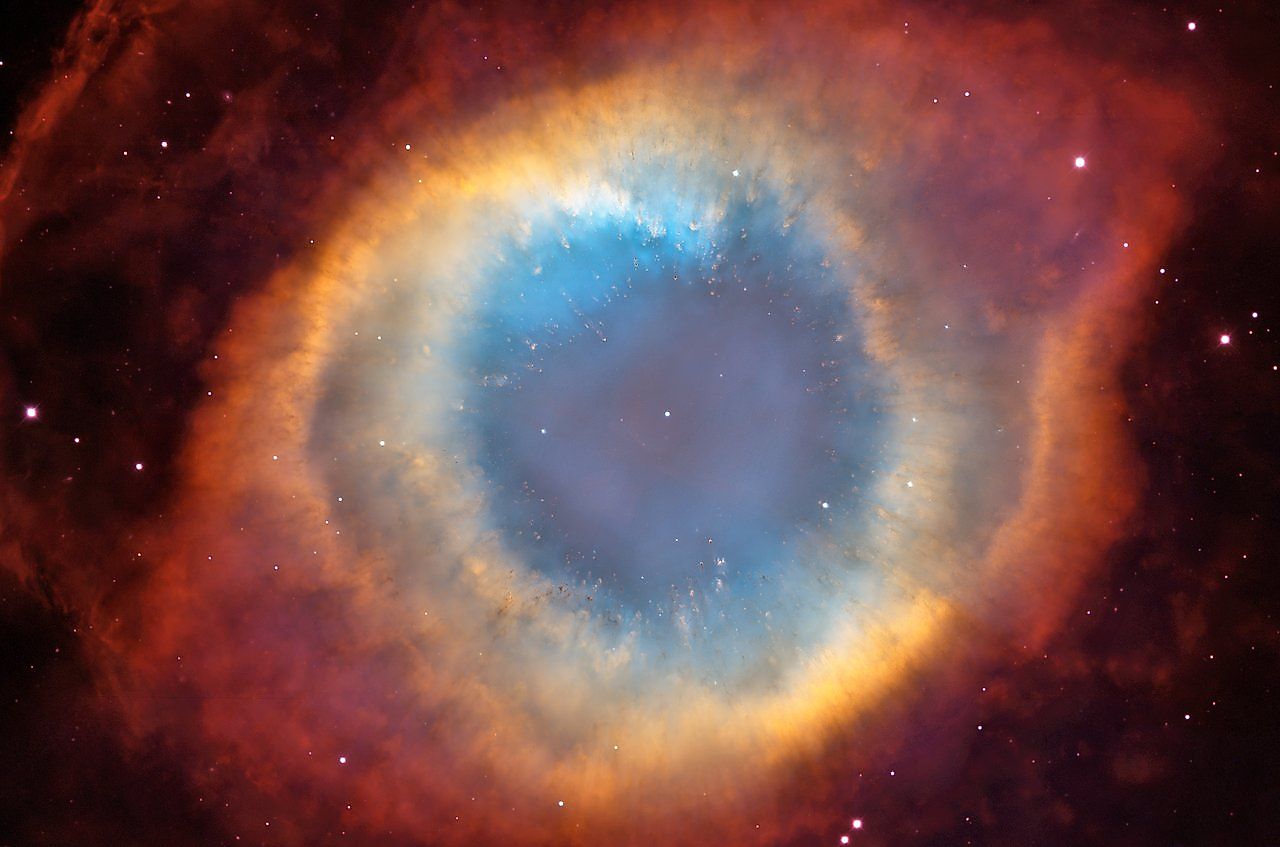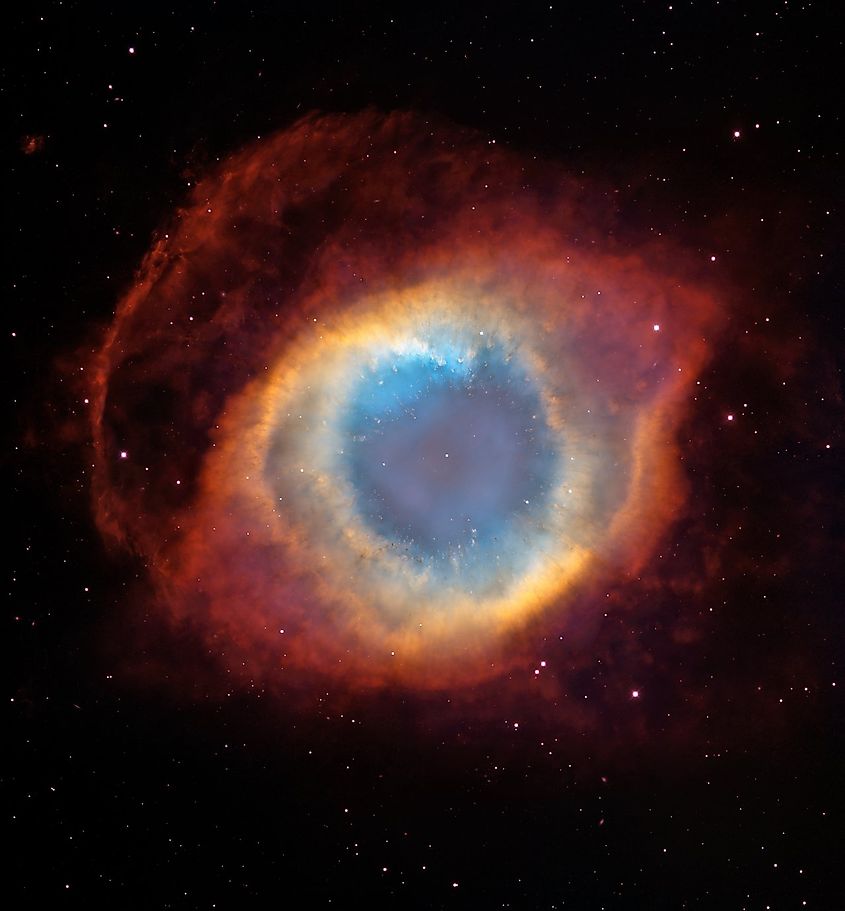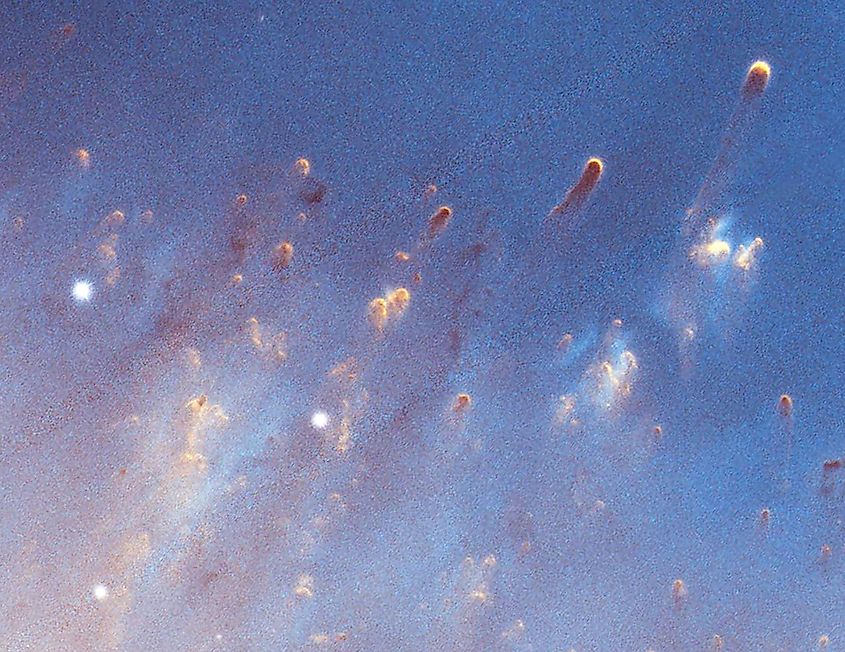
What Is The Closest Nebula?
Nebulae are vast clouds of stellar material and are generally regions where stars form or they form directly from the death of a star. The closest nebula to our solar system is the Helix Nebula, a planetary nebula located 650 light years away.
Seeing the Future in the Past

Looking at the Helix Nebula is like looking into the future. As a planetary nebula, the Helix Nebula was once a star not so different from our sun. Planetary nebulae form during the death throes of sun-like stars that have run out of hydrogen fuel. When stars with masses similar to our sun begin to run out of fuel, their own gravity causes them to collapse inwards. As the core of a star is compressed, temperatures and pressures skyrocket, and elements heavier than hydrogen can be fused. The fusion of heavier elements releases a tremendous amount of energy that counteracts the star’s collapse, causing it to expand many times larger than its original size. As the star expands, its surface area increases and heat becomes distributed over a larger area, causing the outer layers of the star to cool. The cooling of the outer layers causes the star to turn red, and the once sun-like star evolves into a red giant.
Although the star has increased its size, its mass has not increased. The star’s gravity is too weak to hold the star together, and the outer layers are gradually blown off. The blown off layers then form a shell of stellar material around the dying star called a planetary nebula. The Helix Nebula is an example of this process currently unfolding. The central star in the Helix Nebula is blowing off its outer layers, causing the entire structure to grow in size. Eventually, the central star will have exhausted all its material and a white dwarf will form. Interestingly, since the Helix Nebula is 650 light years away, we see it as it was 650 years ago. As is the case with much of astronomy, we are looking into the past to understand what might happen in the future.
Characteristics of the Helix Nebula

Since the Helix Nebula is the closest nebula to our solar system, it is also one of the most studied. The structure itself spans a distance of about 2.5 light years and is currently expanding at a rate of 19 miles per second (31 kilometres per second). The Helix Nebula is also fairly young, having formed around 10,600 years ago.
The Helix Nebula is home to a number of structures called “cometary knots”. These structures are named after the fact that they look similar to comets in our solar system, yet they are far from being comets themselves. Cometary knots form as material with low density is accelerated away from the nebula, causing stellar material to become stretched and elongated. Amazingly, the cometary knots in the Helix Nebula are generally the same size as our entire solar system.











